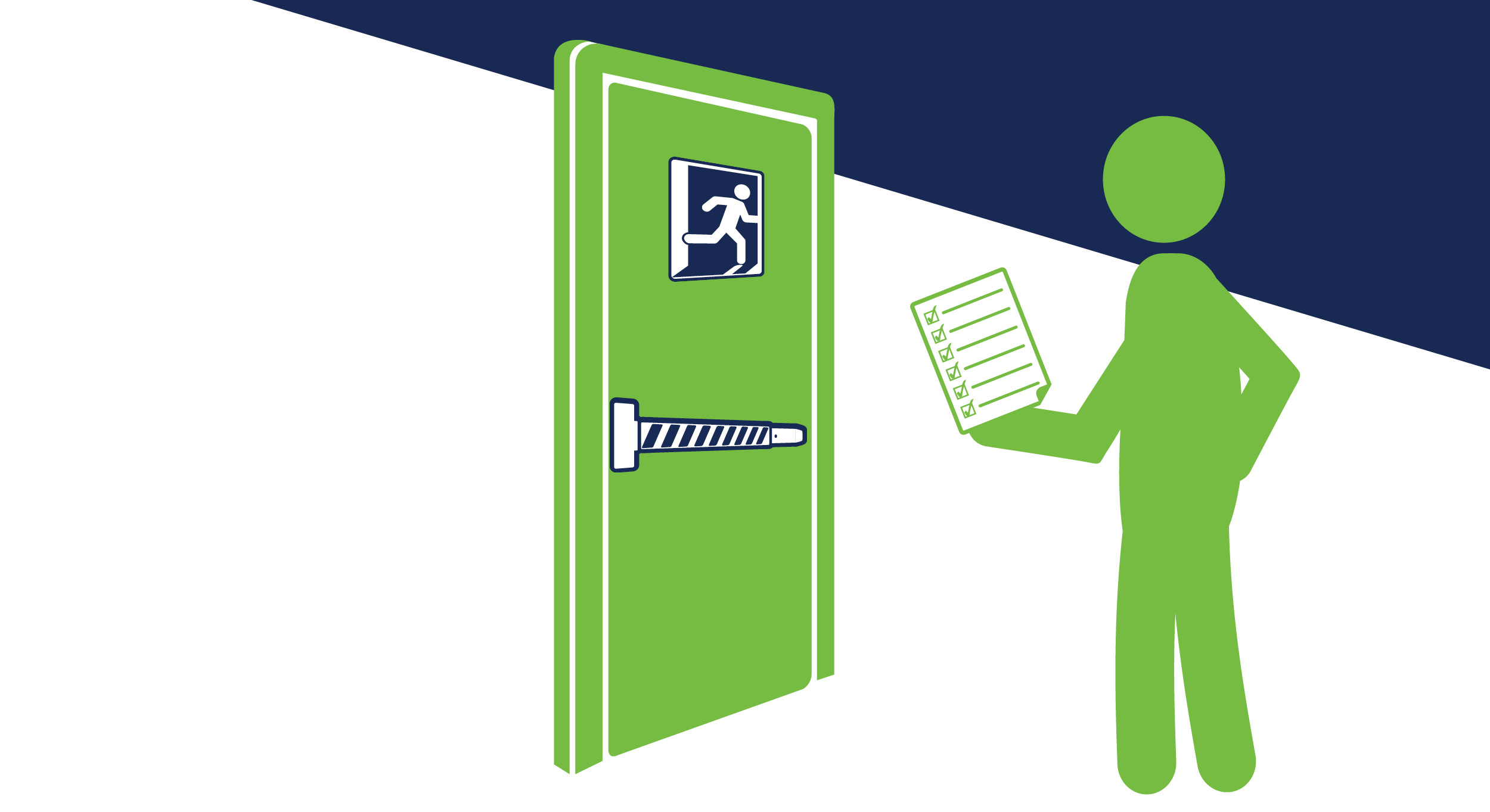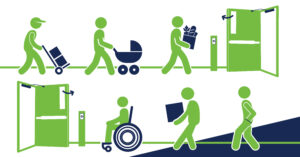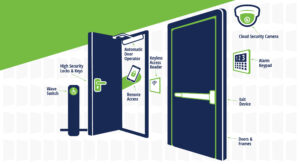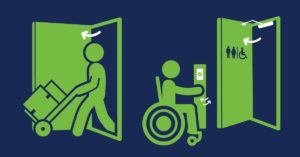Owning a commercial property has plenty of responsibilities and one of the largest includes making sure your staff, tenants, customers, and building are prepared for an emergency. You have your processes in place for what to do when everyone is out of the building, have an alarm system in place to alert everyone, and even a list of whom to call, but are your emergency exit doors as ready as you are?
It is important to keep your emergency exits up to code. This checklist will help you stay up to date on current door requirements to pass your fire exit, emergency exit, OSHA, and International Building Code (IBC) audits.
Are your emergency exits easy to use?
- Make sure all exits can be opened with one arm motion and no prior knowledge of how to operate it.
- This makes it easy for individuals to exit quickly and safely in an emergency.
- Check that exits aren’t blocked on either side by boxes, outside elements, or equipment.
- Even your emergency doors not commonly used!
- Your automatic door operators on exterior doors should be programmed to open when there’s an emergency.
- You can do this by checking the programming of the door. If you aren’t sure how to do this, call your local commercial security experts.
- Periodically check that your emergency exits are still able to open.
- Since they are not opened often, you may find a door is jammed since the door frame is swollen or a door has been padlocked.
These measures are important and will keep your property up to the Life Safety Code (NFPA 101) which is the most used source to protect people and buildings from fire, smoke, and toxic fume threats for new and existing structures.
Are your emergency exits latching correctly?
- Make sure fire doors aren’t propped open.
- Check that door sweeps and seals are flush with the ground.
- This prevents smoke and toxins from entering the room you are in, or adding oxygen to the fire making it spread throughout your entire building.
- Make sure there is no debris around the threshold.
- Debris can get in between the ground and door, breaking the seal. This prevents the door from shutting and latching correctly – allowing fire, toxins, and smoke to move through the building.
- Check that your door closers work accurately.
- When they aren’t working, this allows the door to slam causing a possible injury to someone; or not latch creating a gap for smoke to pass through or a security threat from an intruder.
The reason why your emergency exits need to latch correctly is to keep your commercial property up to the standards of the NFPA 80 Requirements. These requirements make sure emergency exit devices protect the openings in walls against the spread of fire and smoke within, into, or out of commercial buildings.
Are the batteries in the alarmed exit device working?
- When you open the emergency exit, make sure the alarm sounds or a light appears throughout your building.
- Make sure your delayed egress systems open.
- A delayed egress system is an exit device that delays the exit out of that specific door. You will often see these in schools, hospitals, and retirement homes as they help make sure individuals do not leave until a specified time e.g. 15 seconds. If you have a delayed egress system, regularly make sure the timers begin when pressed and that they release when the timer hits 0:00. If they have a dead battery, the timers may not begin, or the door may not open after the time is up.
It is important that all emergency exit regulations are met. They are in place to make sure your building is safe for occupancy.
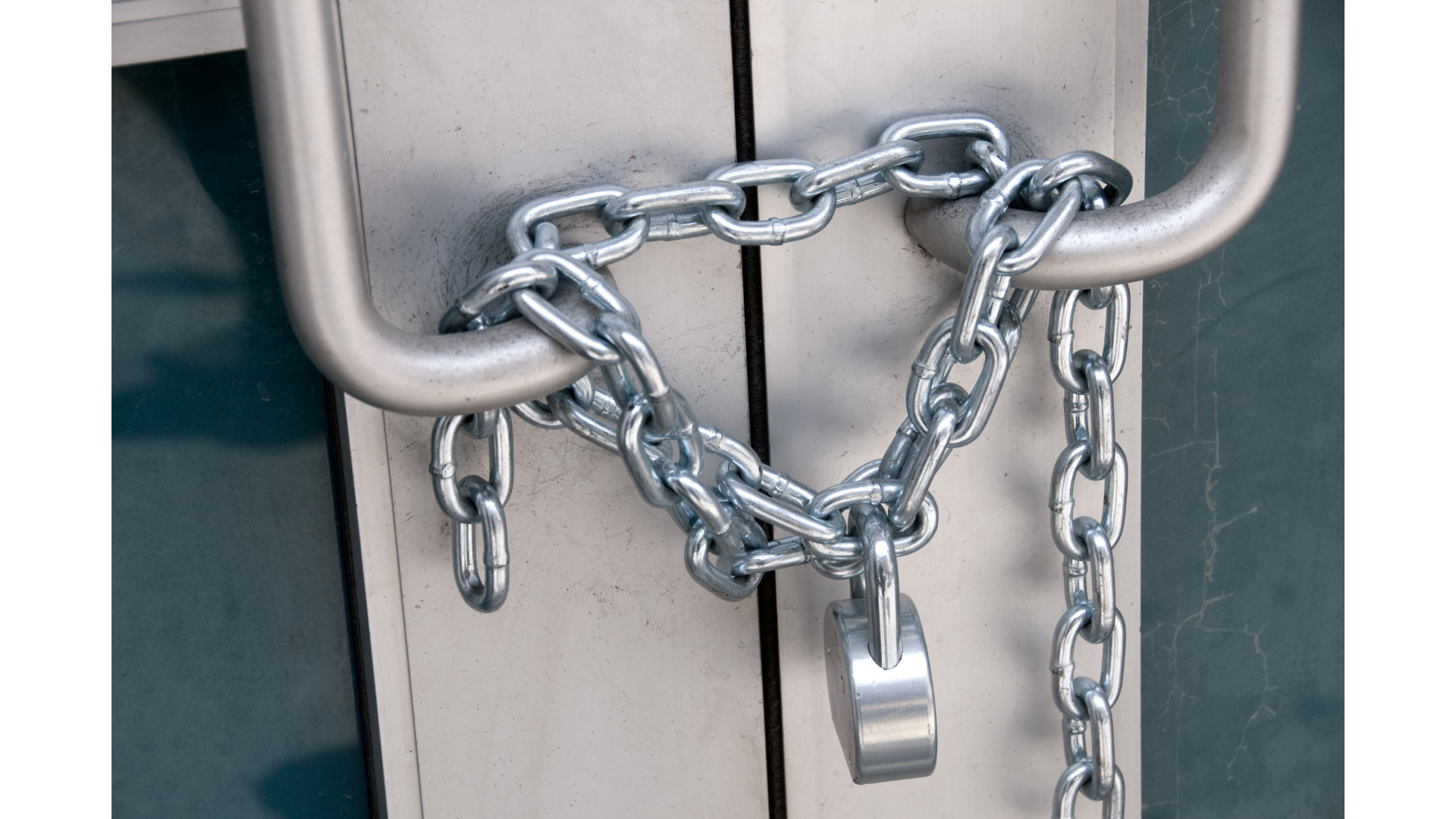 Overall keeping emergency exit doors up to code can seem like a daunting process when you don’t stay up to date on all the requirements. This checklist will help you stay current on door requirements and pass your fire exit, emergency exit, OSHA, and International Building Code (IBC) audits. If you have questions on this list, see a new type of emergency door hardware you could use in your Twin Cities business, or have a problem with your emergency exit, give the experts at Assured Security a call.
Overall keeping emergency exit doors up to code can seem like a daunting process when you don’t stay up to date on all the requirements. This checklist will help you stay current on door requirements and pass your fire exit, emergency exit, OSHA, and International Building Code (IBC) audits. If you have questions on this list, see a new type of emergency door hardware you could use in your Twin Cities business, or have a problem with your emergency exit, give the experts at Assured Security a call.


